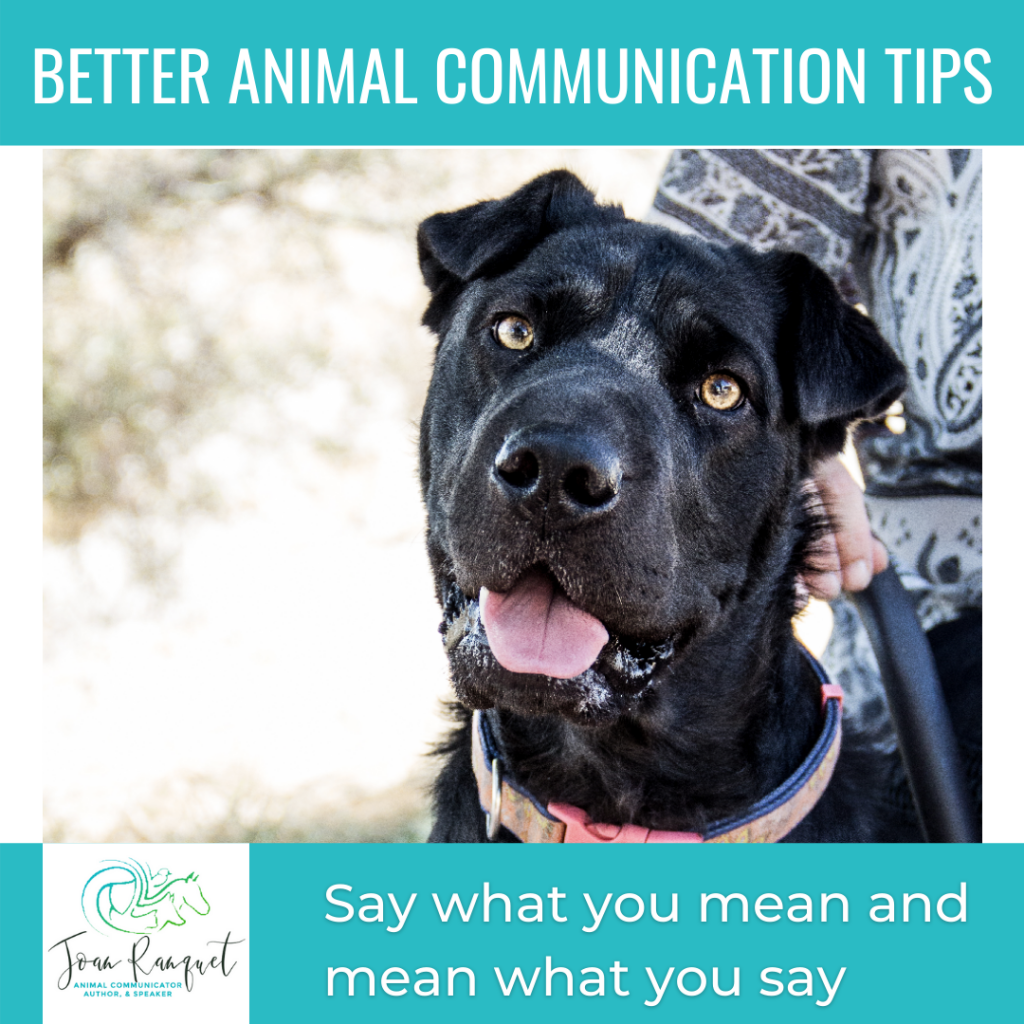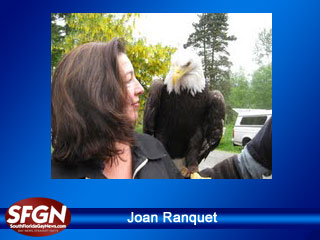Better Animal Communication Tip #1: Say what you Mean and Mean what you Say


Our animal companions are looking to us and listening to us at all times. Even if they appear to be in their own world. Even if we spend a lot of time in our own world. Whether we are aware of it or not we are in their world as we are in everyone else’s world! As I say in my book, Communication with all Life, Revelations of an Animal Communicator, published by Hay House, we are of one mind.


If you tell a dog to get off the couch and the dog gets off the couch and then you think to yourself ‘but when I leave the room the dog will get back on the couch’ – guess what – the dog sees your pictures or hears your thoughts – it’s an almost kneejerk reaction when you leave the room? He/she gets back on the couch.
Consciously picking your words, nicknames or stories is another key thing. I know, I know, we all lose our tempers or to be funny we tell a story about our animal friend. But it is not just our story; we are making it forever their story. Be careful what you convey even to close friends. Pick a point when you and your pet feel like you both need to be complete with the story of their past or the story of the last naughty thing they did, as a result of their past. But don’t make it mythology about the animal – meaning if it’s a negative story, let it go.


This is amazing to watch in your own life. How we communicate at home with our pets is often a microcosm of what we do in the world. There are so many other ways that we are not clear with communication. Our own brain probably says no, yes, well maybe on everything we contemplate. Practicing with your pet at home is a great way to understand how clear you are being out in the world.
In my Animal Communication Seminars, we play ‘sending and receiving’ games. Sometimes it is more remarkable to see how many different images we are sending when trying to relay one concept.
When you ask an animal to do something are you pleading? Are you hopeful? Are you frustrated? Are you saying it with great authority? Is it mixed – as in sometimes he/she does it, sometimes he does it and therefore your voice, emotions, being suggests mixed? Do you have joyful expectation? Is it fun? – Even if it’s a bath? They rolled in something gross and stinky yet it’s freezing outside and therefore you shouldn’t torture them?


My guess is all of us have been at least one of those things in the above mentioned paragraphs before. In fact, we may even swing through each of those things several times a day.
An emotional check and balance of where we are emotionally is important, especially in challenging situations. Automatically, the pictures and the feelings follow the words (we really can’t and shouldn’t multi-task). Saying something to get attention with great authority, expression and emotional leadership is a great state change for you and your animal companion(s). It automatically sends the picture.
Which leads me to Tip# 2: Emotional Leadership.
How do you Say What you Mean and Mean What you Say?


